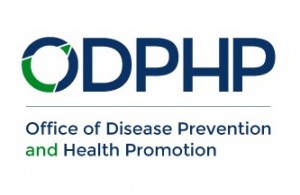By Don Wright, MD, MPH, Deputy Assistant Secretary for Health, Office of Disease Prevention and Health Promotion, U.S. Department of Health and Human Services

In 2015, new data and reports from HHS agencies showed that prevention strategies have contributed to a decline in new cases of diabetes, a continued decline in rates of high total cholesterol, and decreases in adverse drug events, infections and other hospital-acquired conditions in recent years. This is good news for those of us at ODPHP who work on policies and guidelines specifically related to these outcomes, like the Dietary and Physical Activity Guidelines which help Americans make healthy choices, MyHealthfinder which provides lifesaving information about preventive services, Healthy People 2020 which measures America’s progress toward meeting national targets, and the National Action Plan for Adverse Drug Event Prevention and the National Action Plan to Prevent Health Care-Associated Infections which provide roadmaps for improving patient safety.
Although progress has been made in improving the health of Americans through prevention strategies, there is still much work to be done to reduce the occurrence of preventable diseases. In 2016, ODPHP will lead several program and policy initiatives to help guide the Nation to better health. Here are our top five prevention priorities for 2016:
- Helping Americans make healthier food choices. ODPHP led the development of the recently released 2015-2020 Dietary Guidelines for Americans, along with our partners at USDA’s Center for Nutrition Policy and Promotion. Diet is one of our most powerful tools for preventing chronic diseases like obesity, diabetes, heart disease, and some cancers. With less than 60 percent of Americans making food choices that align with the Dietary Guidelines according to the Healthy Eating Index, we all have a role to play in helping Americans make better food choices. In the coming months, look for tools and resources from ODPHP that outline strategies for health and nutrition professionals to help their patients and clients make healthy choices.
- Updating recommendations for physical activity. We are pleased to announce that ODPHP has started work on the second edition of the Physical Activity Guidelines for Americans, due to be released in 2018, and is currently seeking nominations for the Advisory Committee to help inform this edition. With strong evidence linking physical activity with decreased risk of stroke, type 2 diabetes, colon cancer, breast cancer, and depression, physical activity is a critical component in preventing disease and promoting health. With only 1 in 5 adults and 1 in 4 children getting the recommended amount of physical activity, additional strategies are needed to make it easier for Americans to add more physical activity to their days.
- Measuring progress toward Healthy People 2020 objectives. ODPHP leads Healthy People2020, which sets national health-related objectives across 42 topic areas and assesses progress throughout the decade. Look for the Healthy People 2020 Progress Review webinar series to pick back up in 2016, with webinars on access to health services; arthritis, osteoporosis, and chronic back conditions; disability and health; educational and community-based programs; health communication and health information technology; health-related quality of life and well-being; heart disease and stroke; and oral health. The National Center for Health Statistics will also release the Healthy People 2020 Midcourse Review in 2016 with an analysis of measurable objectives across the 42 topic areas at the mid-point in the decade.
- Improving access to quality health information. ODPHP employs the principles of health literacy to develop evidence-based communication tools to improve access to health information that helps both patients and health professionals communicate better with each other. In 2016, healthfinder.gov will be a critical part of HHS’s efforts to empower and engage patients to take control of their health. We will contribute to this effort by continuing to work with partners such as CVS Health to increase access to quality health information about preventive services. Also, look for more information in 2016 on a pilot project that uses health literacy to engage patients and providers in shared-decision making about colorectal cancer screening.
- Improving patient safety. At ODPHP, we convened national policymakers and stakeholders in public health to develop the National Action Plan to Reduce Health-Care Associated Infections and the National Action Plan for Adverse Drug Event Prevention. These plans are critical to improving the safety of patients by defining strategies that can be used for designing prevention programs that provide oversight of healthcare facilities and improve patients’ access to health information. In 2016, ODPHP intends to set measures and targets for both the National Action Plan to Reduce Health-Care Associated Infections and the National Action Plan for Adverse Drug Event Prevention that will be available for public comment in the coming year.